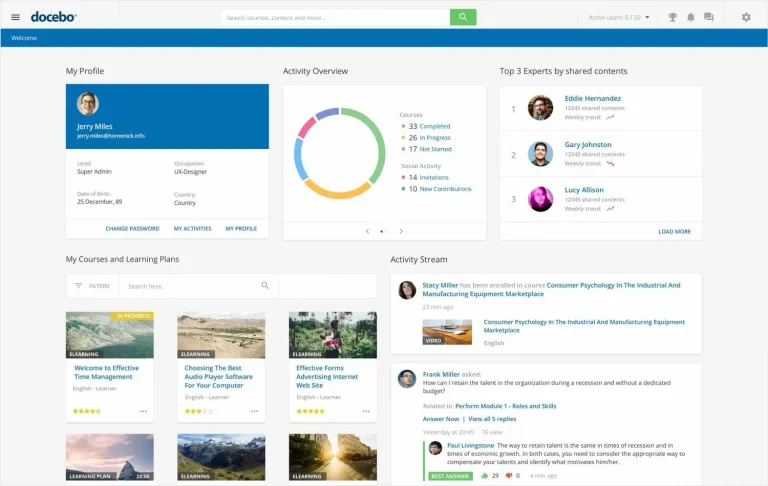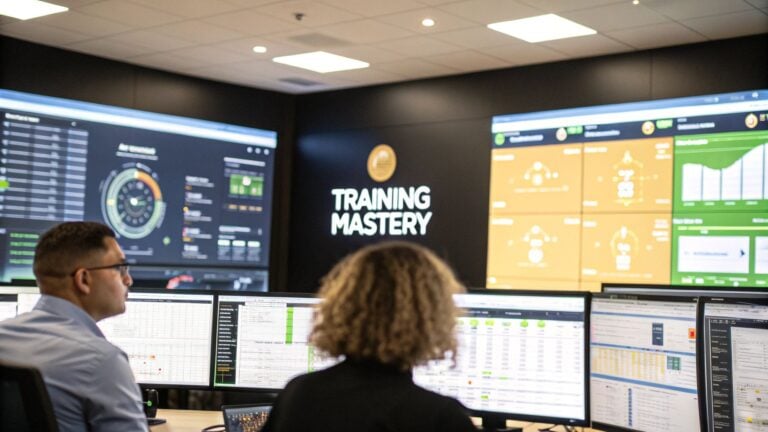How Can You Make Your Online Course Quizzes Interactive and Engaging?

Interactive quizzes give instant feedback, which boosts understanding. For your online course, these quizzes don’t just assess knowledge but also strengthen retention, making it easier for your audience to grasp key points.
To create effective quizzes, your focus should be on content that aligns with your learning goals. Using various question types like multiple-choice, true or false, and scenario-based exercises keeps your audience interested.
Different Types Of Quizzes
Different quiz types serve different purposes depending on your course content and learning objectives.
For example, some quizzes help reinforce knowledge, while others test problem-solving skills. By mixing question formats, you can create a varied and engaging experience that fits your course structure.
Multiple-Choice Questions
Multiple-choice questions are one of the most versatile and widely-used formats. You present a question with several answer choices, where one or more options are correct. This quiz type works well for testing factual knowledge, key concepts, and decision-making skills.
Example:
- What is the capital of France?
- A. Paris (Correct)
- B. London
- C. Berlin
- D. Madrid
When designing multiple choice questions, avoid confusing or trick options. Your questions should be clear, and each answer should be distinct. Including a “none of the above” option is another way to challenge your audience.
Guidelines:
- Keep answer choices simple and straightforward.
- Use distractors that are plausible but incorrect.
- Limit each question to one key concept.
True or False Statements
True or false questions are ideal for testing basic facts or concepts. You give a statement, and your audience chooses either true or false. These are simple to create and quick to answer, making them useful for quick assessments.
Example:
- The Earth is the third planet from the Sun.
- True (Correct)
- False
When using true or false statements, focus on straightforward concepts without adding too much detail. Keep the statements clear, and avoid using double negatives or complex phrasing, which can confuse your audience.
Guidelines:
- Use direct and clear language.
- Stick to black-and-white facts, not opinions.
- Keep statements short and to the point.
Fill-in-the-Blank Questions
Fill-in-the-blank questions let you test recall rather than recognition. Your audience fills in a missing word or phrase based on the context provided. This type is useful for testing specific terms, names, or important definitions.
Example:
- The chemical symbol for water is ___.
- Answer: H2O
Fill-in-the-blank questions are more challenging because your audience must come up with the correct answer from memory. It’s important to design these questions with clear context to avoid ambiguity.
Guidelines:
- Provide clear and direct clues.
- Limit answers to one or two words.
- Avoid questions with multiple correct answers.
Matching Exercises
Matching exercises work well for topics with paired concepts, such as definitions, dates, or categories. You list two columns—one with prompts and one with answers—and your audience must match them correctly. This format helps reinforce relationships between concepts.
Example:
- Match the capital to its country:
- A. Japan
- B. Germany
- C. Brazil
- Berlin
- Tokyo
- Brasília
Matching exercises are best when you have several items that naturally connect. Keep the lists balanced so that one column doesn’t have more items than the other.
Guidelines:
- Keep both lists short and manageable.
- Use clear and distinct terms.
- Make sure pairs logically connect.
Scenario-Based Questions
Scenario-based questions are more advanced and simulate real-life situations. Your audience is given a scenario and asked to choose the best course of action. This type is excellent for evaluating problem-solving and decision-making skills, particularly in professional or technical courses.
Example:
- You manage a small business, and a client complains about a product defect. What should you do first?
- A. Apologize and offer a refund.
- B. Explain the company’s return policy.
- C. Ask for more details about the issue. (Correct)
- D. Ignore the complaint.
Scenario-based questions require careful thought and can provide deep insights into how well your audience applies what you taught. Focus on realistic situations that they might actually face.
Guidelines:
- Create scenarios relevant to your course content.
- Provide realistic and practical options.
- Focus on decision-making or applying knowledge in real contexts.
How to Plan the Quiz Content
Planning the content for your quiz is key to making sure it fits your course goals. Your quiz should measure how well your audience grasps important points while also keeping them interested.
Aligning Quiz Questions with Learning Objectives
Start by connecting each quiz question to specific learning objectives. Every question should help assess your audience’s grasp of the key concepts you want them to learn. For example, if your course covers digital marketing, and one objective is to understand SEO basics, you might include a question like:
Example:
- What does SEO stand for?
- A. Search Engine Optimization (Correct)
- B. Social Engagement Outreach
- C. Sales Expansion Option
This approach ensures each question checks whether your audience meets your course’s goals. It also keeps your quiz focused, preventing off-topic or irrelevant content.
Balancing Question Difficulty Levels
A good quiz has a mix of easy, moderate, and challenging questions. This balance helps engage all learners, from beginners to advanced. Too many difficult questions can discourage some of your audience, while too many easy ones may not be challenging enough.
Example:
- Easy: What is 2+2?
Answer: 4 - Moderate: Which of these is not a prime number?
Answer: 4 - Challenging: Solve for x in the equation 2x + 5 = 9.
Answer: x = 2
Start with easier questions to build confidence, then gradually increase the difficulty. This creates a smooth learning experience that feels both fair and motivating.
Structuring Questions to Promote Active Learning
Active learning questions push your audience to apply what they know, rather than just recall facts. These questions often involve problem-solving, decision-making, or analyzing situations. For example, instead of asking for a definition, you could present a scenario that requires applying the concept.
Example:
- Instead of asking: What is the definition of customer service?
- Ask: A customer complains about a late delivery. What should you do first?
Active learning questions promote deeper understanding by making your audience think critically about how to apply knowledge. These types of questions can also spark discussion and further learning in group settings.
Tools to Build Interactive Quizzes
The right platform should let you create engaging content, seamlessly integrate with your course platform, and offer features that enhance the learning experience.
Best Quiz Creation Platforms
Choosing a reliable quiz creation platform is the first step. The platform you choose should offer flexibility, ease of use, and features that match your course needs. Some popular platforms include:
1. Google Forms
Try – Google Forms
Google Forms is free and simple, making it ideal for basic quizzes. You can create multiple-choice, short answer, and checkbox questions with ease. It also allows automatic grading for objective questions.
2. Typeform
Try – Typeform
Typeform stands out for its engaging interface. It offers options for quizzes that look interactive and smooth. You can add images, videos, and customize the design to fit your brand.
3. Quizlet
Try – Quizlet
Quizlet is a user-friendly platform that works well for flashcards and learning games. It’s best for courses where memorization and repeated practice are key.
4. ProProfs
Try – ProProfs
ProProfs offers advanced features like timed quizzes, randomized questions, and feedback options. It is suitable for more professional settings with detailed analytics.
5. Kahoot!
Try – Kahoot!
Kahoot! is popular for gamified quizzes. You can make learning fun with competitive elements like points and leaderboards, making it a great choice for group settings.
Embedding Quizzes into Your Learning Management System (LMS)
Once you create your quiz, embedding it into your LMS ensures your audience can access it without any hassle. Most LMS platforms offer simple ways to integrate quizzes created with third-party tools.
Steps for Embedding:
- Generate the embed code from your quiz creation platform.
- Log in to your LMS and navigate to the course module where you want the quiz.
- Use the content editor to insert the embed code directly.
- Preview the quiz within your LMS to check for proper display and functionality.
LMS platforms like Moodle, Canvas, and Teachable support various formats, including SCORM and HTML, allowing easy integration of quizzes. This makes it seamless for your audience to complete the quiz without leaving the course page.
Integrating Multimedia (Images, Videos, Audio) in Quizzes
Adding multimedia elements like images, videos, and audio enhances your quizzes by catering to different learning styles. Visuals help clarify concepts, while audio or video clips make the quiz more interactive and engaging.
Examples of Multimedia Integration:
- Images: Use labeled diagrams or charts where your audience can identify or select parts.
- Videos: Insert short clips followed by questions related to what was shown. For example, a video demonstrating a technique followed by a multiple-choice question on the correct steps.
- Audio: Use voice recordings, especially in language courses, where the quiz asks your audience to identify words, phrases, or pronunciations.
I hope this helps you to create better quizzes for your online course. With the right tools and setup, your quizzes can be more engaging and useful for your audience. Focus on making them clear, valuable, and directly linked to your course goals. Simple steps like choosing the right platform and adding relevant media can make a big difference in how your audience learns.






